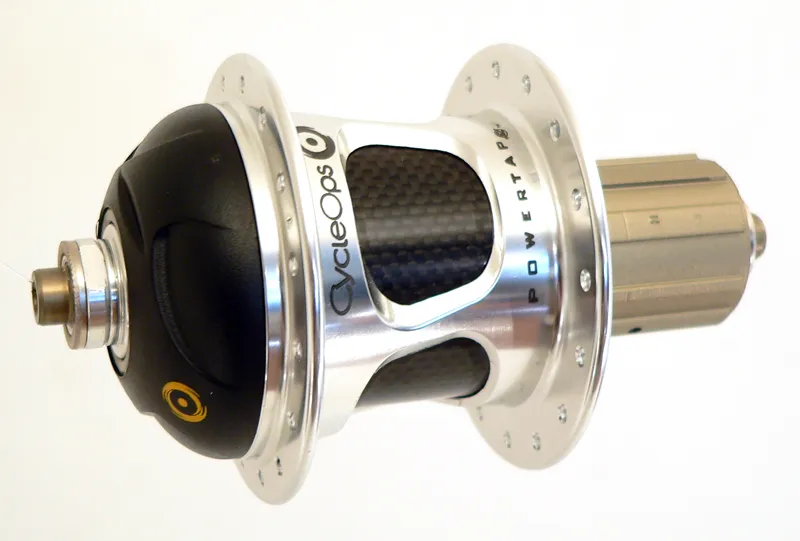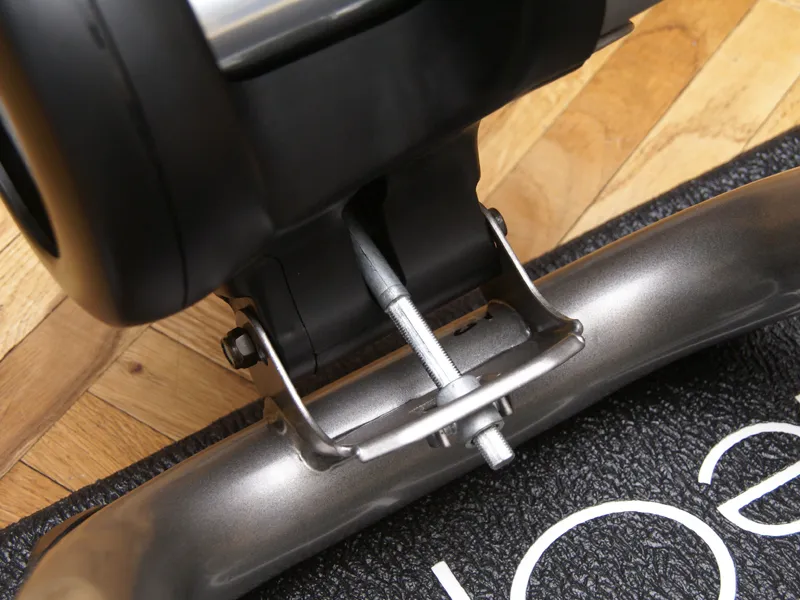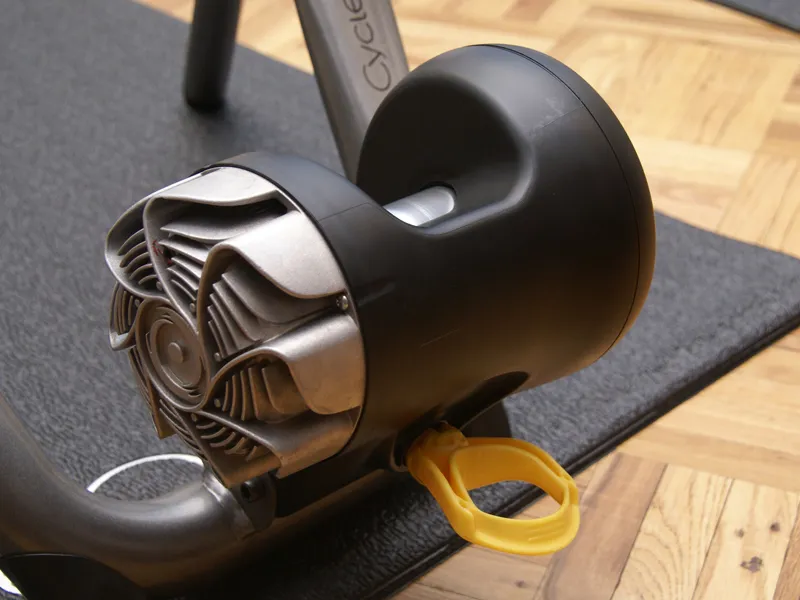PowerTap cuts the cord
Saris will expand its range of CycleOps PowerTap power measuring hubs for 2009 at both ends of the pricing spectrum while also adding refinement across the board. A new PowerTap Comp model will lower the price of entry to US$799.99 ( £400) but will also serve as the sole wired offering in the company catalogue. All> of the other PowerTap models will now go wireless and will switch to the open-format ANT+Sport protocol, thus making the hubs compatible with Garmin’s new 705 GPS computer and possibly others, such as the iBike and Quarq Qranium, in the future.
Conveniently, ANT+Sport operates on the same general 2.4GHz frequency band as current models. An eventual firmware upgrade (price and exact availability to be determined) will easily bring existing wireless units up to date without the need for any additional hardware.
The 2009 range will feature five models in total, all of which are hand-assembled, calibrated and certified at Saris’ factory in Madison, Wisconsin. Next up from the PowerTap Comp model come the PowerTap Elite+ (US$999.99/ £500, 625g) and PowerTap Pro+ (US$1199.99/ £600, 475g), both with new all-aluminium oversized hub shells. The Elite+ will use a lower-cost steel freehub body and steel axle but the Pro+ will incorporate an alloy body and axle to help bring the weight down.
The upper-end PowerTap SL+ (US$1599.99/ £800, 416g) will retain its current carbon-and-aluminium hub shell and alloy freehub body but gains a new 15mm-diameter aluminium axle and correspondingly upsized cartridge bearings for increased stiffness and a moderate weight loss.
New for 2009 will be the PowerTap SLC+ (US$2399.99/ £1200) that adds top-quality hybrid ceramic bearings, possibly from CeramicSpeed.
All of the new hubs will begin landing in shops around September.
Saris will also increase the availability of complete PowerTap wheelsets (which already includes two Zipp disc wheels) thanks to a new partnership with Mavic. The French wheel giant will offer PowerTap-equipped versions of its Cosmic Carbone SL road wheels in both clincher and tubular varieties from September, using a radial driveside and two-cross non-drive lacing pattern similar to what it uses on its Ksyrium ES.
Sharp readers will recognize that this lacing pattern marks a departure from PowerTap’s once-adamant - and overly restrictive - insistence on three-cross lacing on both sides. Apparently the new hub shells have been tested to be more than adequate stiffness-wise to support the reduced-cross patterns, and have for some time now. According to Saris’ Jesse Bartholomew, the non-driveside still needs a minimum cross pattern for accurate power measurements, though, and included manuals will be updated for 2009.
High-tech features for new Pro series trainers
Saris will also introduce a new Pro series of trainers that will mark the division’s first major redesign since the company purchased CycleOps ten years ago. All of the new models will boast a more modern appearance as well as a more stable foundation and added convenience.
The folding legs reach further forward for less movement when sprinting and a new single-sided mounting system cuts down on flex while also speeding up mounting and dismounting. Softer feet provide a better grip on hard surfaces and easily adjust for uneven floors, while a new resistance unit clamp puts an end to tiresome knob twisting while also providing more consistent tyre contact. Finally, all of the Pro series trainers fold far more compactly than before with all components locking firmly in place, too, for easier storage and transport.
Saris will outfit the Pro series frame with one of three new resistance units. The new JetFluid Pro (US$399.99/ £200) uses a new oil-based resistance unit similar to the existing Fluid2 and also provides a similar resistance curve. A new shroud funnels cooling air directly on to the new finned fluid housing for cooler operating temperatures.
The SuperMagneto Pro (US$399.99/ £200) builds on CycleOps’ innovative Magneto concept, which is still the only magnetic-based unit with a progressive resistance curve, but now adds four easily selectable power curves to suit a particular workout need. A ‘spin’ setting mimics the feel of rollers for high-cadence pre-race warm-ups while a ‘road’ setting bumps things up for more a more lifelike feel. More intensive sessions can make use of the ‘interval’ setting while the ‘mountain’ setting is reserved for only the strongest riders.
Sitting at the top of the heap is the new PowerBeam Pro (US$1199.99) which provides variable resistance by altering the distance between a set of magnets and the zinc flywheel in a system analogous to the Magneto. In this case, however, that distance is controlled by a linear stepper motor inside the resistance unit housing. Built-in PowerTap hardware offers real-time feedback on your power output and the PowerBeam Pro will even self-adjust the resistance to maintain the desired target power setting. When combined with the included heart rate monitor, the result is the most precisely controlled workout in the range.
The resistance can be manually adjusted via a wireless handlebar console but custom programs can also be uploaded via CycleOps’ Power Agent 7 software. For now, the software doesn't quite allow users to upload actual ride profiles although the company is working on the issue and hopes to have a software upgrade available before too long. According to Saris, the PowerBeam Pro resistance unit offers sustained resistance of over 1300W which should make it suitable for all but the most elite athletes.
New 2009 models will be available in September; the rest of the CycleOps trainer line will carry over unchanged.






























